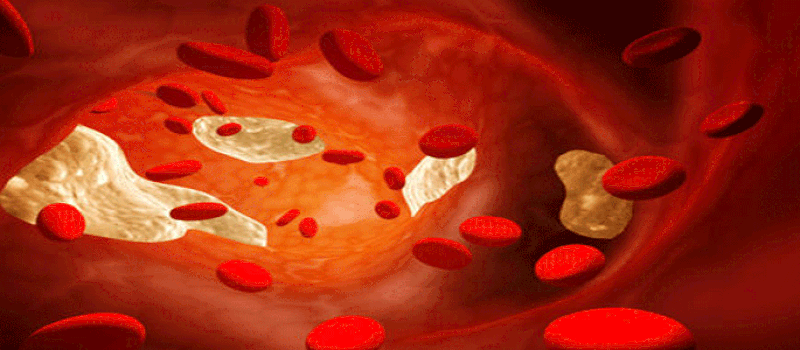Fat embolism, a syndrome that affects many major trauma victims, is a valid concern for anyone working in the medical trauma profession. It can progress to fat embolism syndrome (FES), where it causes inflammation that affects the proper function of various organs and their corresponding systems. When FES develops, it results in serious conditions and could be fatal. Unfortunately, the majority of people are unaware of the dangers of fat embolism.

What Is Fat Embolism?
Fat embolism is common in trauma victims and surgery patients, primarily to the lower extremities. It takes place when fat from the bone marrow dislodges and enters the bloodstream, where it forms what is known as emboli, a small collection of fat cells, where it then becomes embedded in the blood vessel wall, blocking the blood flow. The real hazard stems from the fact that the emboli are small and large in quantity, which can cause lots of signs and symptoms. When fat embolism evolves and fat embolism syndrome occurs, the mortality rate can be around 10%-20%, which is higher in the young and old.
What Are the Causes and Symptoms?
Fat embolism can occur when a broken bone or a surgery on a bone occurs. Unfortunately that is not the only way to contract it; it also can be caused by other medical issues, like a lipid infusion, pancreatitis, burns and childbirth. It can occur due to diseases that affects the breakdown of lipids in the body.
In a trauma, the first 36 hours are critical for fat embolism usually appears between 12-36 hours. Diagnosing it becomes a challenge because symptoms and signs vary depending on where the block occurs. It can involve a central nervous system dysfunction with high possibility of experiencing coma and death, affect the circulatory system by creating an irregular heartbeat or arrhythmia in the heart, or impact the respiratory system by causing distress due to the lack of oxygen. Regardless of the location of the blockage, fat embolism is usually accompanied by anemia and thrombocytopenia (a low platelet number in the blood).
90% of people with fat embolism will never know they have it because its symptoms are so minor and can heal over time. Roughly 10% sufferers will develop the severe fat embolism syndrome. When this happens, it must be treated quickly and efficiently due to its high death rate.
Fat Embolism Syndrome - The Progression of Fat Embolism
Fat embolism syndrome, or FES, is separated from fat embolism, primarily in the severity of the condition. FES usually develops within 3 days after an accident. It is imperative that once symptoms occur—and they will appear suddenly—medical attention is immediately needed.
Four main conditions of FES include anemia, thrombocytopenia, pulmonary insufficiency and neurologic symptoms. The diagnosis is based on symptoms occurring within the first 3 days, including tachycardia, dyspnea and tachypnea. The respiratory issues can develop into adult respiratory distress syndrome (ARDS). The symptoms derived from FES in the central nervous system include irritation, confusion and restlessness that can be exacerbated into a coma or eventually death.
Of the symptoms, medical professionals divide the symptoms into two major categories: major and minor diagnostic criteria. The major diagnostic criteria include the inability to get sufficient oxygen on their own, impairment in the central nervous system and petechial rash (pinpoint red or purple spots on the skin from bleeding). Minor diagnostic criteria include fever, fat emboli in the eyes, anemia, thrombocytopenia, lipiduria (lipids in the urine) and faster than normal heart rate.
How to Treat Fat Embolism
For approximately 90% of fat embolism, Treatment isn't necessary, as the body will heal and fix the problem on its own. In some cases ED care can help. It will support the individual; if for example, the patient struggles with breathing, the ED can provide that much needed oxygen. The ED can address the symptoms as well.
Prevention Methods
The best kind of treatment is to stop it before it ever occurs.
One way to do this is by stabilizing the fractured bone as soon as possible, especially when the long tibia and femur bones are involved.
Another preventive method is to keep an acceptable level of blood in circulation and replace lost blood as soon as possible so as to prevent the formation of fat emboli.
Treatment Options
Once obtained the disease, fat embolism treatment includes the usage of prophylactic corticosteroids. One type of it, methylprednisolone, has resulted in decreasing FES incidents. Unfortunately, corticosteroids have some negative effects, like making the patients more prone to infections and wounds taking a longer time to heal. These negative side effects have limited the use of corticosteroids, except in cases of cerebral edema or excess fluid in the brain.
For respiratory issues, oxygen therapy and positive end-expiratory pressure ventilation are used to help the patient breathe.
Treatment for FES is not a catch-all situation. It varies person to person because the body is literally fighting against the disease itself. Treatments have a supportive role to provide oxygen to the body through an air mask or tubes. In severe cases, patients may be moved to an Intensive Care Unit where full-breathing support may be added by a breathing machine.

View All Comments /Add Comment